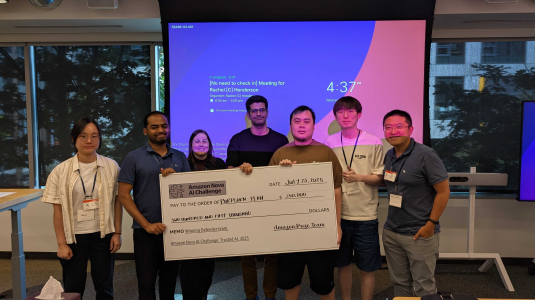Customer-obsessed science


Research areas
-
August 8, 2025A new philosophy for developing LLM architectures reduces energy requirements, speeds up runtime, and preserves pretrained-model performance.
Featured news
-
2024 Conference on Digital Experimentation @ MIT (CODE@MIT)2024Many data-driven companies measure the impact of product groups and allocate resources across them based on the estimated impacts of features they launch via A/B tests. In this doc, we show that, when based on a standard frequentist estimator of the impact of features, this practice can significantly overstate the impact of product groups and distort the allocation of resources. When this practice is instead
-
ACM SoCC 20242024Database performance troubleshooting is a complex multi-step process that broadly involves three key stages– (a) Detection: determining what’s wrong and when; (b) Root Cause Analysis (RCA): reasoning about why is the performance poor; (c) Resolution: identifying a fix. A plethora of techniques exist to address each of these problems, but they hardly work in real-world at scale. First, real-world customer
-
Getting a good understanding of the customer intent is essential in e-commerce search engines. In particular, associating the correct product type to a search query plays a vital role in surfacing correct products to the customers. Query product type classification (Q2PT) is a particularly challenging task because search queries are short and ambiguous, the number of existing product categories is extremely
-
2024Training large language models (LLMs) for external tool usage is a rapidly expanding field, with recent research focusing on generating synthetic data to address the shortage of available data. However, the absence of systematic data quality checks poses complications for properly training and testing models. To that end, we propose two approaches for assessing the reliability of data for training LLMs
-
2024Current instruction-tuned language models are exclusively trained with textual preference data and thus are often not aligned with the unique requirements of other modalities, such as speech. To better align language models with the speech domain, we explore (i) prompting strategies grounded in radio-industry best practices and (ii) preference learning using a novel speech-based preference data of 20K samples
Academia
View allWhether you're a faculty member or student, there are number of ways you can engage with Amazon.
View all





























